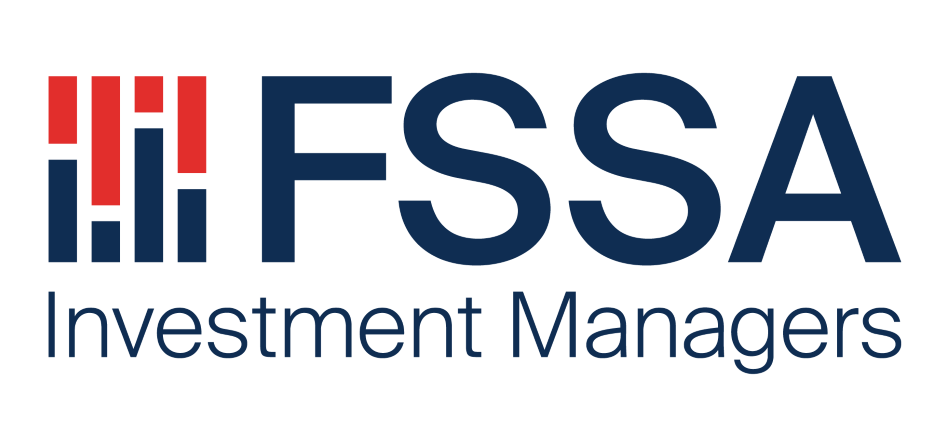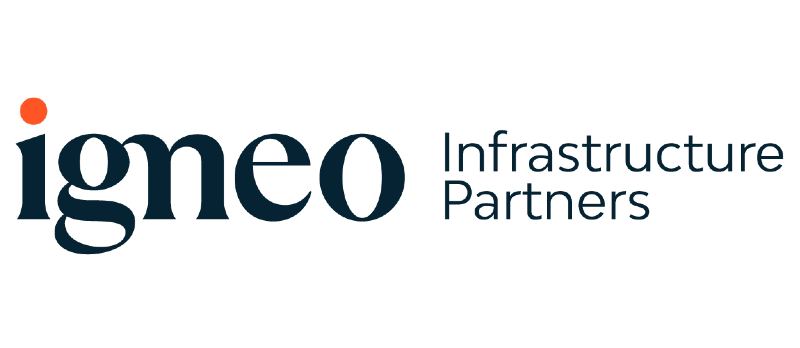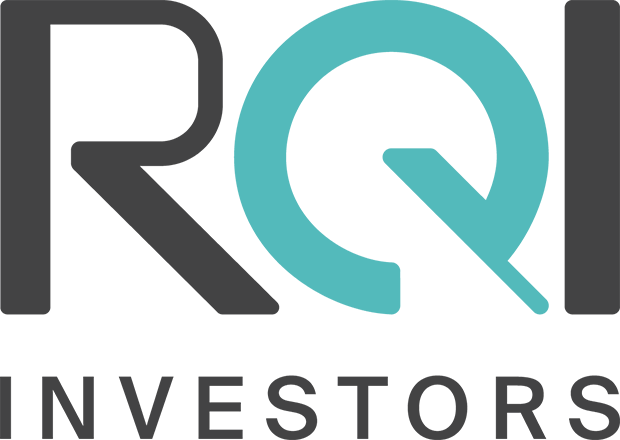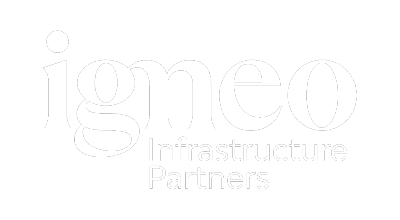Your search returned more than 50 results. The 50 most relevant results are displayed.
A diverse range of global, regional and sector based equity, multi-asset and fixed income investment strategies and funds
In this video, Head of Australian Equity Growth Dushko Bajic discusses the changing macro environment and navigating volatility within the investment process.
The portfolio managers are supported by a large group of equity analysts with a proven track record of fundamental bottom-up stock research.
First Sentier Investors today announced unit holders have voted in favour of a change in responsible entity (RE) for a number of funds from Colonial First State to The Trust Company.
The explosion of COVID-19 cases in early 2020 saw economic uncertainty hit the markets. Volatility spiked and equity markets fell sharply – the S&P/ASX200 almost halved in value over the 22 trading days from February 21st.
Concentration in equity markets has reached unprecedented levels, particularly in the United States. A select few mega-cap stocks, colloquially referred to as the "Magnificent 7," now dominate market indices, reflecting a convergence of technological innovation, speculative enthusiasm, and the allure of generative AI.
In the following video, Head of Australian Equity Growth Dushko Bajic discusses the impact of rising rates on company valuations and the economy.
RQI Investors’ quantitative value strategies have a long history of outperformance versus peers and value indices. Our disciplined, highly active, and repeatable value investing process provides investors with a benchmark unaware, diversified equity portfolio that is cost competitive versus fundamental active stock pickers.
An overview of the Asian Equity Plus and Asia Pacific Small-Caps strategies in August 2020.
Our recent paper on Extreme Concentration focussed on the US (and so Developed Markets). This was the natural as the central issue of concentration was among the top 10 stocks in the US, among them, the “Magnificent 7”.
The China equity market includes a myriad of share classes, each with distinct characteristics.
Better profit margins, higher return on equity and superior share market returns are hallmarks of listed companies with more diverse executive teams, new research shows.
From growing companies to up-and-coming names, our range of active, research-driven approaches to the Australian share market aim to deliver above market returns over the long term.
The mid caps space is characterised by successful companies with strong growth profiles, which can offer attractive diversification benefits to Australian equity portfolios. Yet they comprise only a small proportion of a typical broad-based portfolio. In this article we highlight some of the attractive characteristics of this often-overlooked segment of the market.
American Listed Infrastructure (ALI) has seen a significant increase in Merger and Acquisition (M&A) activity. Private market and foreign corporate buyers are paying premiums of 25% to listed markets, often for non-controlling stakes. This M&A illustrates the intrinsic value available to investors in the ALI asset class. We expect M&A will continue for a number of years. This will deleverage balance sheets, reduce equity needs and recycle capital from non-core to core activities, thereby raising the quality of the ALI asset class.
In our last client update in February 2021, we discussed the reasons we resisted the temptation to switch into pure cyclicals and so-called “value” stocks1 — even though we had anticipated a sector rotation in the market (the TOPIX subsequently peaked in March 2021). When there is a rise in inflation from very depressed levels it usually favours value and cyclicality, as pricing power returns to sectors that had been under pressure, no matter how temporary the effect. As such, since the Covid vaccine breakthrough last November, a number of lagging sectors, such as mining, commodities, shipping and banks, enjoyed a strong rally to which our Japan strategy had virtually no exposure. Given the commoditised nature of these businesses, and their less attractive outlook and long-term growth sustainability compared to the companies in our portfolio, it is hard to call investments in these securities anything more than a macro trade. Nevertheless, not owning them does not mean that the FSSA Japan Equity strategy is not positioned for the global recovery that is being supported by rising vaccination rates and economic re-openings.
Despite the extraordinary events since its launch in June 2007 – including the Global Financial Crisis, volatile commodity prices, and political upheaval in many parts of the world – the strategy has delivered strong, consistent returns through a focus on valuation, quality and active management.
We are a small team of passionate investors managing, on behalf of our clients, investment funds with a focus on high-quality companies that are well positioned to contribute to, and benefit from, sustainable development.
As the saying goes, “There are two kinds of forecasters: those who don't know, and those who don't know they don't know.” Recently, we have seen hordes of the latter kind, garbed as analysts, Unicorn founders, freshly-minted CEOs and so-called “experts”, as they engage in modern-day snake oil salesmanship, which is what seems to pass for Fundamental Equity Research these days. The difference between making forecasts and predictions is the difference between a rational investor and a soothsayer. Today, there are a number of companies and analysts who desperately pretend that a different set of rules apply to them. To that end, they have even invented a new jargon-littered language that has been enthusiastically adopted by the investing community. Some of the words and phrases being used (and over-used) these days make us wince. Let’s look at a few.
In this economic research note, we look at the Fed's next steps, examine the central banks' revised economic forecasts and look at the financial market implications of today's hike.
People are are at the heart of our success as a leading global asset manager
Global investment manager, First Sentier Investors, today announced changes to its investment capabilities within Australia.
The most attractive point about India is that there are about 6,000 listed companies across a diverse range of sectors. That gives us the opportunity to invest in high quality businesses across a range of industries. This is unlike some other emerging markets where investors might find themselves restricted to only a handful of industries. Additionally, India has one of the oldest stock markets in the world. The culture of equity ownership is prevalent and people are familiar with the rules that come with it. Over the years, governance standards, the composition of a board, gender diversity, and protection of minority shareholders — they have all improved. Over time, corporate governance regulations in India have also strengthened significantly. As regulators have tightened rules related to company privatisation, royalty payments and disclosure of related party transactions, the protection of minority shareholder interests has consistently improved. Another aspect that makes India stand out from her emerging market peers is the quality of companies there. In India, you will find many high-quality private companies
The outlook for the global economy and financial markets looks more uncertain today than it has for a long time. Both interest rates and inflation have risen sharply. There is a growing consensus that much of the world will shortly be experiencing slowing economic growth.
Equity markets are currently at all-time highs. This has generated returns which, we believe, are unlikely to continue, so we need to think about where returns are likely to come from over the next 10 years. We need to think about how investors can position themselves to take advantage of this. This note highlights why Emerging Markets (EM) Value looks to be a market segment which appears – relatively speaking – to be attractive.
The pricing phenomenon of the dividend run up – an opportunity to generate alpha?
First Sentier Investors announced the appointment of Ashley Conn as Chief Financial and Strategy Officer.
Global listed infrastructure underperformed in 2023 owing to rising interest rates and a shift away from defensive assets. Relative valuations are now at compelling levels. Infrastructure assets are expected to see earnings growth in 2024 and beyond, aided by structural growth drivers.
Strategists often argue that Japan is perhaps the most cyclical market amongst the major global economies, with profits highly correlated to global trade. We disagree. It is true that many of the large index constituents are companies with high overseas exposure or are highly sensitive to forex fluctuations. However, in our view, Japan’s economy is actually very defensive and mainly driven by domestic demand. Japan’s exports account for less than 20% of GDP — far lower than that of Germany or South Korea where more than 40% of GDP is derived from exports. Another misconception about Japan is that the ageing population and prolonged deflationary environment means that there are few quality companies that can deliver high growth and returns. We disagree with that notion too. Especially from a bottom-up perspective, our view is that Japan has a deep investment universe with many high-quality companies that are focused on delivering sustainable growth and returns and are uncorrelated to the global macro environment.
We are entering a new era. The year 2024 will be unpredictable and clouded by many uncertainties. It will be marked by geopolitical risks, the ongoing taming of the inflation beast, and how the US Presidential election will impact markets.
Japan has been overlooked by global investors, due to macro headwinds such as an ageing population and anaemic GDP growth. Japan is also only considered as part of a global asset allocation strategy; or sometimes as a macro trade due to the misperception of its high cyclicality. However, in our view, Japan offers a deep investment universe of high quality companies that generate sustainable growth. Find out more in this interview with Sophia Li, the portfolio manager who launched FSSA IM’s dedicated Japan strategy in 2015.
Discover how our equity managers with one of Australia's longest track records provide capital and income growth by investing in the Australian share market.
We crossed six US states meeting over 70 infrastructure management teams as well as customers and suppliers at three conferences. We visited three corporate head offices, several regulators and toured the country’s largest nuclear power plant.
Consider listing property as part of real asset portfolios for long-term returns, liquidity, and inflationary hedge. This article explores these factors and emphasizes the investment potential of listed property as a complement to real asset portfolios.
With strong long term growth prospects and a track record of resilience through economic downturns, this increasingly institutionalised property sector is a defensive play for investors.
Head of Global Property Securities Stephen Hayes: Global city populations continue to grow, driven by urbanisation. The provision of housing for growing populations is a major challenge for many countries and cities. Adequate housing is a factor that influences a city’s mobility of labour, social wellbeing and commerce levels. Government housing policies are typically viewed holistically with policies covering social, private and rental housing. New supply is not always efficient and can be problematic particularly in densely populated cities.
In September 2023, I met more than 30 global listed infrastructure companies and stakeholders from the UK, Europe and China. The following travel diary summarises my impressions and findings from these meetings.
Despite China being the first country to face the challenges of Covid, early optimism around its control over the virus seems to have waned. As Chinese cities and provinces continue to battle against new variants and local surges, consumer spending is down and the economy is starting to slow. On top of that, there have been increasingly cumbersome regulations on Chinese technology companies, the medical sector and the property market – the latter causing the implosion of a number of property developers late last year. The Chinese government has now shifted to a more accommodating stance in a bid to stabilise the economy. But its “Common Prosperity” goal and zero-Covid policy is likely here to stay. Against this backdrop, FSSA’s portfolio managers discuss their views about the changing opportunity set in China – and how they have positioned the team’s China portfolios to tap into the longer-term growth story.
I recently returned from a two-week, coast-to-coast trip across the United States, talking to institutional clients, pension funds and investment consultants. The mood on the ground is one of caution. Rising inflation and interest rates are on everybody’s mind. A war in Europe and spiking oil prices are creating uncertainty. And the possibility of recession hovers at the edge of conversations. During such a period, it’s easy to wonder if there are any safe ports in the investment storm. In this environment, we believe that infrastructure has an important role to play in portfolios. Investments in assets such as toll roads, airports, railroads, utilities and renewables, energy midstream, wireless towers and data centres show their worth in such times. These types of investments have high barriers to entry, structural growth and strong pricing power, giving them the potential to withstand inflation and generate consistent earnings, regardless of the broader economic backdrop. With this in mind, below are three reasons we believe infrastructure investors may be well-placed to weather the geopolitical storms ahead.
The push for achieving a decarbonised economy will see sweeping social and economic change across regional communities in Australia. The new frontier in the march for a greener future in Australia is a focus on a just transition, supported by a Federal Government-backed Net Zero Authority, to ensure workers, industries and communities can seize opportunities in the nation’s net zero transformation.
Australia currently has a unique opportunity to set up a framework that can support investment aligned with the nation’s sustainability goals, by means of the Australian Sustainable Finance Strategy (“the Strategy”).
This final paper is somewhat shorter than the first two, and simply aims to look a little deeper into whether zombie firms appear in Realindex portfolios, and how a Quality factor acts as a repellent for these stocks. This is more important in Value-oriented portfolios as the potential appearance of lower quality “junk” firms, or even zombies, is higher here than in broader universes.
In 2020, one group of companies has done particularly well – the popular digital technology companies focused on e-commerce, delivery and entertainment, to name a few industries. In emerging markets, they dominate the Chinese market; but they can also be found in Korea, Southeast Asia, Eastern Europe and Latin America. We do not own many of these in the strategy; and as such, we are often asked: What holds us back? After all, they have performed well and – at least on paper – should have the prerequisite to generate strong returns and free cash flow, given their often high gross margins, negative working capital profiles and asset light nature. While we are not disputing the potential for this in the future, we would argue for cautiousness on most of these projections.
Insulation from the effects of inflation is a key objective for many investors and global listed infrastructure has delivered returns in excess of inflation over the long term. But passively investing in this asset class does not guarantee a hedge to inflation
Firstly, regulations are nothing new — it has always been a part of the investment equation. If we look at Hong Kong or Singapore for example, the government would introduce new regulations on the property market from time to time; and in China, the government has introduced a number of new regulations for banks and insurance companies over the years. In fact, last year the government changed the pricing policy on automobile insurance, affecting quite a few Chinese general insurers. Therefore, regulation risk is always something to consider. Secondly, we believe the Chinese government has indeed changed — in terms of their priorities and focus — over the last three to four years. China was particularly focused on economic growth previously; and by all accounts, China has been a major economic miracle. From poverty, it has become the second-largest economy in the world. However, in recent years under the leadership of President Xi Jinping, the Chinese government has started to focus much more on social stability and equality. Thus, the underlying spirit of the recently announced regulations seems to be targeting wealthy entrepreneurs and conglomerates. The goal is to help improve the lives of workers, for parents to ease their burden with children, and so forth. Then, there is the environmental aspect too, with the Chinese government increasingly focused on pollution and carbon neutrality. From that perspective, it certainly looks like the Chinese government is becoming more socialist than it was before. I think that is the trend and to some extent, investors will need to acknowledge and accept it when investing in China.
Though Covid hasn’t yet finished with us, the markets have finished with Covid. In real life, there is still plenty of misery to go around, but in our opinion things have seldom been better for investors. Optimism has served us well, as the money-printing presses have rolled to counter the “unprecedented” threat. In investment, perhaps it is better to be a stupid optimist than a clever pessimist. And, we believe markets do indeed go up most of the time.
FSSA India webcast focus on the India Subcontinent Markets and Asia Pacific equities
The emerging markets asset class is extremely varied. It includes democracies and dictatorships, economies reliant on manufacturing and those that export commodities, and – most importantly – some of the very best companies in the world alongside some of the very worst. If the last ten years investing in emerging markets has taught us anything it is that in the long run, quality wins.
This article was produced in partnership with First Sentier Investors. We firmly believe that active management is crucial when constructing a geared portfolio. A geared investment strategy can be considered a more complex strategy that borrows to invest, ultimately magnifying an investor’s exposure to rising or falling markets.
Incorporated in 1885, BHP began as a silver, lead and zinc mine in Broken Hill, Australia. Over the next century the company grew into one of the largest diversified resource companies in the world with operations including oil and gas, steel production and mining of a variety of commodities including copper, potash, coal and diamonds. It listed on the Australian stock exchange in July 1961, making it the oldest company currently trading, and throughout much of this time it has been the largest company on the ASX by market capitalisation (currently it is ranked third). In 2001 BHP announced it would merge with fellow resource powerhouse Billiton. Billiton also had a long history dating back to a single tin mine in 1851 before growing into a major producer of aluminium, alumina, chrome, manganese, steaming coal, nickel and titanium. The company was Dutch controlled from inception before being acquired by South African firm Gencor in 1994. As the world’s largest metals and mining corporation, BHP Billiton began trading in July 2002 and operates as a dual listed company (DLC) – a corporate structure in which two companies have merged into a single operating business but retain separate legal identities and stock exchange listings (in this case Australia and the United Kingdom ).
Get the right experience for you
Your location :  Australia
Australia
Australia & NZ
-
 Australia
Australia -
 New Zealand
New Zealand
Asia
-
 Hong Kong (English)
Hong Kong (English) -
 Hong Kong (Chinese)
Hong Kong (Chinese) -
 Singapore
Singapore -
 Japan
Japan



























 United Kingdom
United Kingdom 